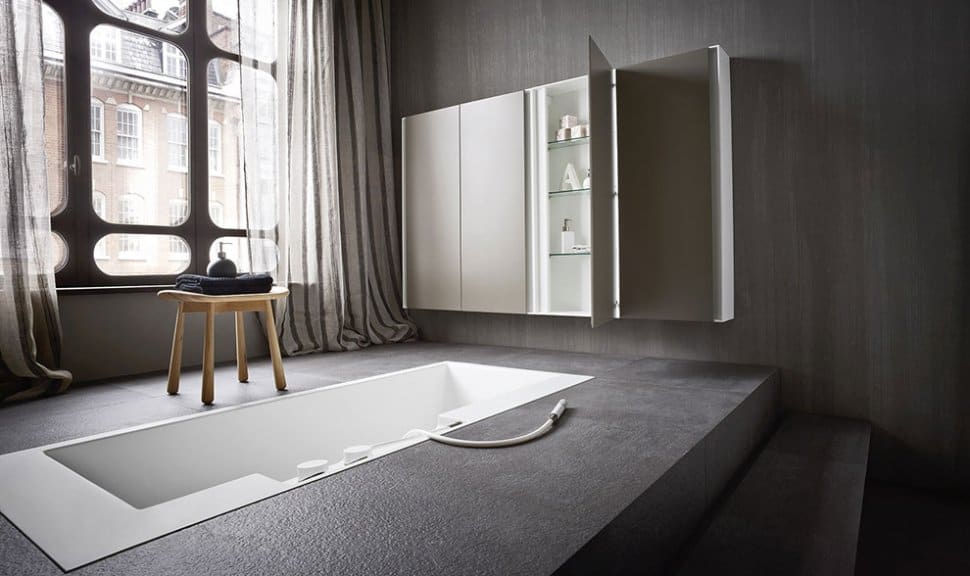
What is a sunken bathtub? Benefits, Examples & Photos 2025 – Expert Guide
If you’re looking to create a spa-like atmosphere in your bathroom, a sunken bathtub might be the luxurious upgrade you
Shopping for a new bathtub can feel overwhelming, especially with so many styles and options to choose from. If you’re considering a drop-in bathtub, this guide will walk you through everything you need to know—from key features and materials to pros, cons, and comparisons with other tub types. Let’s explore whether a drop-in tub is the right fit for your bathroom.
A drop in bathtub is a bathtub that has been finished on all sides with a lip or rim, allowing it to be fastened or secured to a finished alcove or structure commonly referred to as a surround. This design allows you to simply ‘drop in’ your bathtub, obscuring the outside of the bathtub completely by the surround so only the interior of the bathtub is visible.
The surround can be constructed from anything ranging from natural stone to wood, and can be raised high or constructed at feet level. This install method is what separates this bathtub design from a freestanding bathtub which can be placed and installed anywhere there is room in your bathroom.
Drop-in bathtubs are known for their built-in, customizable design and are a popular choice for homeowners who want both style and practicality. Unlike freestanding or alcove tubs, drop-in models are installed into a pre-built deck or platform, offering a seamless look that can match nearly any bathroom style. Below are the defining features that make drop-in bathtubs stand out:
Drop-in bathtubs remain a popular and dependable choice in 2025, especially among homeowners who value customization and practicality. Their recessed design allows for personalized decking with tile, stone, or wood finishes, making them a go-to option for built-in elegance and integrated storage. While they may not be the most visually dramatic, drop-in tubs continue to appeal to those prioritizing function, ease of maintenance, and affordability—particularly in traditional or custom bathroom layouts.
That said, freestanding bathtubs have emerged as the leading trend in bathroom design, favored for their bold appearance and spa-like experience. With their ability to serve as a design focal point, freestanding tubs now hold the largest share of the bathtub market. Still, drop-in tubs haven’t faded—they offer a more budget-conscious, space-efficient alternative that works well in both renovations and new builds.
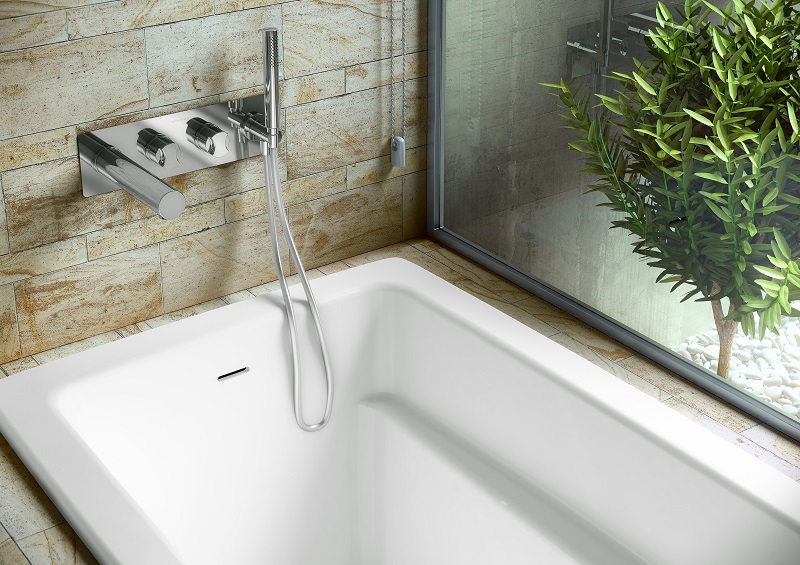
Drop in bathtubs are typically constructed from a variety of materials, most commonly fiberglass, acrylic, cast iron and solid surface materials.
Fiberglass is very affordable, but the material isn’t physically durable and will tend to warp and become unstable due to its porous nature.
Acrylic is constructed from fiberglass mixed with resin and a more durable coat, making it a bit more expensive than fiberglass, but the material is non-porous, making it much more durable in the long term.
However, acrylic does not have excellent heat retention when compared to a material such as cast iron which is a bit more expensive, but the material is very durable, able to weather quite a bit of physical and chemical punishments while retaining excellent heat retention.
And last are the solid-surface materials or Stone Resin. Constructed from smashed stone and resin bonded together, this material is non-porous and has a comparable heat retention to cast iron.
There are many reasons to purchase a drop-in bathtub for your home – here they are at a glance:
| Pros | Cons |
| Space-efficient design | Limited placement options |
| More bathing space than alcove tubs | Complicated plumbing access |
| Generally more affordable | Requires platform or surround construction |
| Customizable design and installation | Less visually striking than freestanding tubs |
| Added deck space for storage or seating | |
| Easy to clean and maintain |
Drop-in bathtubs are known for their ability to maximize space in smaller bathrooms. Their built-in installation allows them to be snugly placed within a framed enclosure. This makes them ideal for compact or uniquely shaped bathrooms.
Compared to alcove tubs, drop-in models often offer a more generous bathing area. This makes them a great choice for those who enjoy long, comfortable soaks. The flexibility in size and shape lets homeowners select models tailored to their specific needs.
Drop-in tubs are generally more affordable than many freestanding or whirlpool alternatives. Their standard construction and materials help keep costs down without sacrificing comfort. This makes them a great value for budget-conscious renovators.
With a drop-in tub, you can customize the surrounding deck to match your bathroom’s style. Whether you prefer tile, stone, or wood, the platform can be designed to your liking. This flexibility gives designers and homeowners more creative control.
The surrounding deck offers convenient space for toiletries, candles, or even décor. This built-in surface can double as seating or storage, enhancing functionality. It’s especially helpful in bathrooms that lack shelving or ledge space.
Because they’re recessed into a platform, drop-in tubs often have fewer exposed surfaces to clean. The enclosed design helps prevent water from splashing onto the floor. With fewer seams and joints, maintenance is typically straightforward.
Drop-in bathtubs require a pre-built deck or surround, which limits where they can be installed. They usually need to be placed against a wall or in a corner. This can reduce layout flexibility during a remodel or new construction.
Accessing plumbing or making repairs can be more difficult with a drop-in tub. Since the tub is enclosed in a deck, you often need to remove panels or surrounding materials. This can lead to longer service times and potentially higher repair costs.
Unlike freestanding tubs, drop-ins can’t just be set in place—they need a custom platform or surround. This adds time and labor to the installation process. It may also increase the overall renovation budget due to construction requirements.
Drop-in tubs tend to have a more built-in, utilitarian look. While they can be stylish, they don’t make the same bold visual statement as freestanding tubs. This may be a downside for homeowners seeking a luxurious or spa-like centerpiece.
There are a few factors you will need to consider as they might limit your options when it comes to drop in bathtubs:
Drop-in bathtubs typically have a soaking depth ranging from 16 to 18 inches (approximately 1.3 to 1.5 feet). This is measured from the bottom of the tub to the overflow drain and provides enough water depth for a comfortable soak without being too deep for most users.
In terms of overall size, standard drop-in tubs generally start at 60 inches (5 feet) in length and 30 inches (2.5 feet) in width. Larger or luxury models can extend up to 72 inches (6 feet) long and 42 inches (3.5 feet) wide, offering more room for stretching out or dual bathing.
| Type | Length | Width | Average Depth | Best For |
| Standard Size | 60 inches (5 ft) | 30 inches (2.5 ft) | 16–18 inches (1.3–1.5 ft) | Most bathrooms, single users |
| Large/Deep Soaker | 66 inches (5.5 ft) | 36 inches (3 ft) | 18+ inches (1.5+ ft) | Taller users, longer soaks |
| Oversized/Luxury | 72 inches (6 ft) | 42 inches (3.5 ft) | 18+ inches (1.5+ ft) | Couples, spa-like experiences |
Average depth of a drop in bathtub ranges anywhere from 16-18 inches commonly, or 1.3-1.5 feet. They typically will start with an overall dimension of 5 feet in length and 2 and a half feet in width. This of course can grow larger with higher end drop-in bathtubs ending at 6 feet in length, with a final width of 3 and a half feet.
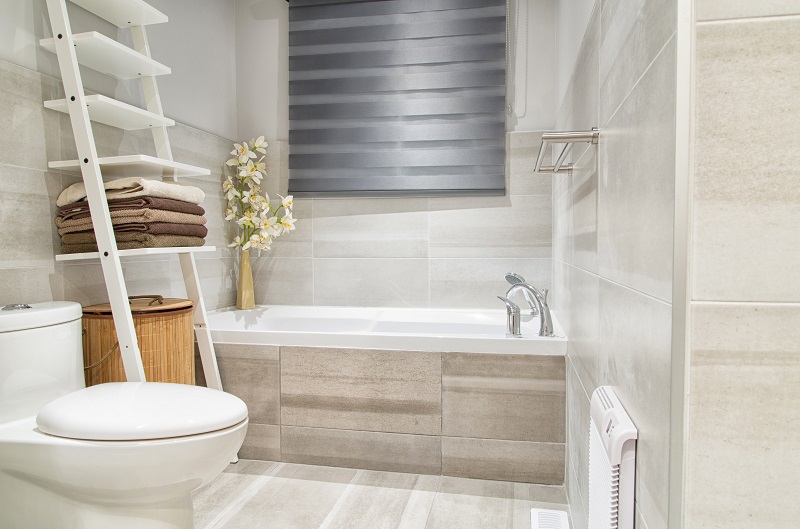
There also exists a size variant for those with more modest bathroom accommodations, with the lowest being 4 feet in length with an overall width of 2 feet. However, for as much as the size of the bathtub grows, the overall water depth will still sit at the normal 16-18 feet or 1.3-1.5 feet respectively.
Contrary to popular belief, alcove bathtubs actually refer to the location which the bathtub is installed in. Drop-in bathtubs are installed anywhere a carved out deck or structure is implemented, often times in the center of the bathroom. Alcove bathtubs on the other hand, are installed in a recess, against the wall or an alcove. As a result, alcove tubs are typically more rounded and smaller, whereas drop-in tubs are longer and wider as the area they fill is quite different.
The purpose of the alcove is to help those with movement issues navigate the bath easier. With an alcove installation, a handlebar can be installed for additional support to guide the movement impaired. Of course a drop-in bathtub can be fitted with the same functions, but it will require additional work in creating a surround flush to a wall.
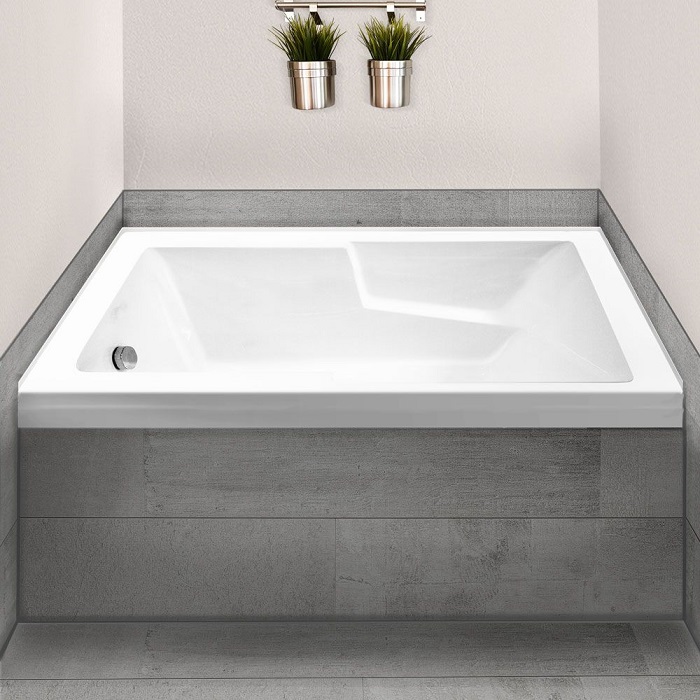
The most common question in choosing a bathtub as both have been quite popular since modern bathing has existed. As stated previously, drop-in bathtubs are installed in a previously constructed recess in your bathroom as they are ‘dropped in’. Freestanding bathtubs are quite different as it allows you to place your bathtub just about anywhere in your bathroom. With the drop-in method, plumbing is a bit more difficult to access as your bathtub is flush with the constructed deck or tiled area.
Many people install an access panel for easier access down the road. Freestanding bathtubs on the other hand, enjoy the benefit of having easy to access plumbing with the majority of it being quite visible and outside of the bathtub. Due to the installation differences, this also determines the size of each. Due to the limitations of the installation method, drop-in bathtubs are typically smaller with very little variance in water depth. Since freestanding bathtubs do not necessitate an area to install, they can be much larger, with greater water depth for personal soaking.
This freedom also extends to the shape of them as drop-ins are typically either rectangular, circular or triangle shaped. Freestanding bathtubs can fit in any part of that spectrum from being large and oval shaped, to more space saving circular shape.
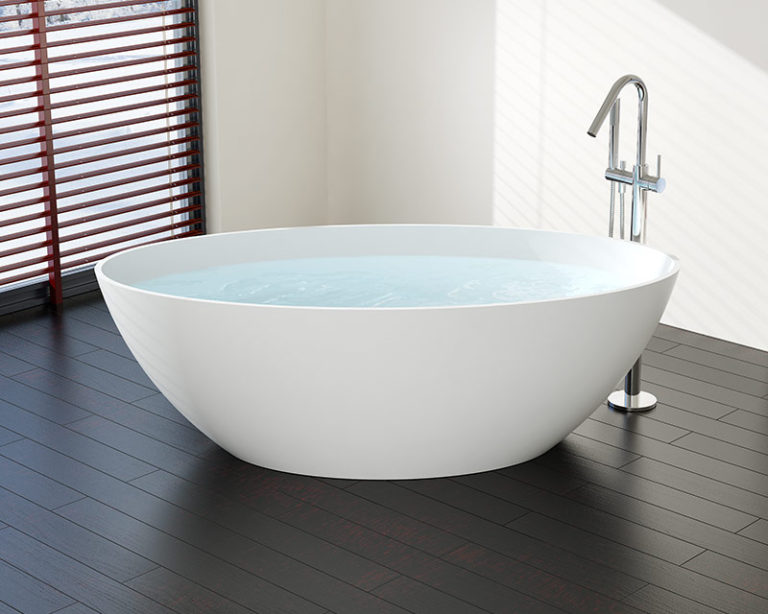
Another variant of the freestanding bathtub, garden bathtubs are freestanding bathtubs with much greater water depth available. Most drop-in bathtubs have a general water depth between 1.3-1.5 feet whereas smaller garden tubs enjoy a water depth of 2 feet. This of course can grow to 5-6 feet on larger higher end models.
The purpose of the increased water depth is that the garden tub is seen as a soaking bathtub, so it fills more of a luxurious purpose then general bathing. Size wise they still tend to be larger and more circular in shape as they are freestanding bathtubs still and retain much of their installation freedom. Where drop-in bathtubs are still limited to the size of the constructed recess or surround available.
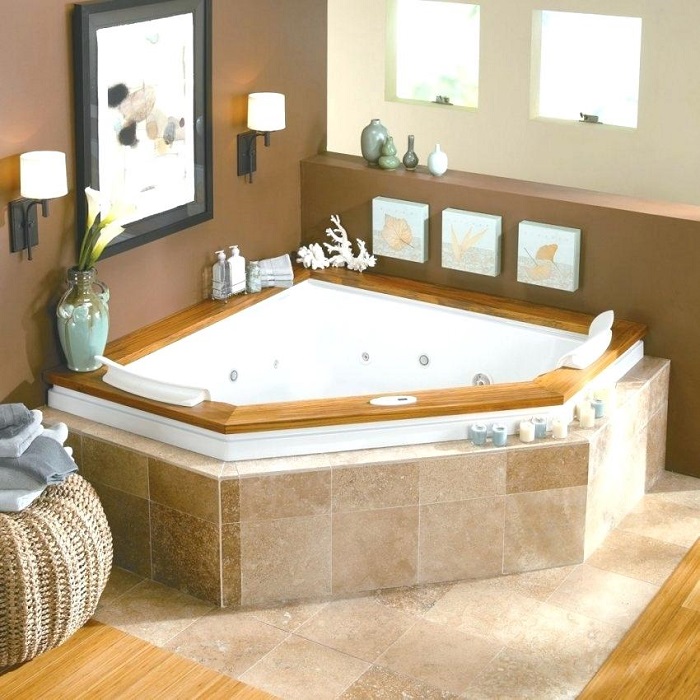
Drop in bathtubs tend to be a popular option as they are perhaps the most affordable bathtub on the market with starting prices ranging from $500-750 on the low end. This is comparable to your standard walk-in shower, shower/bathtub combo and alcove as the installation for these is very similar, meaning the price points are nearly identical.
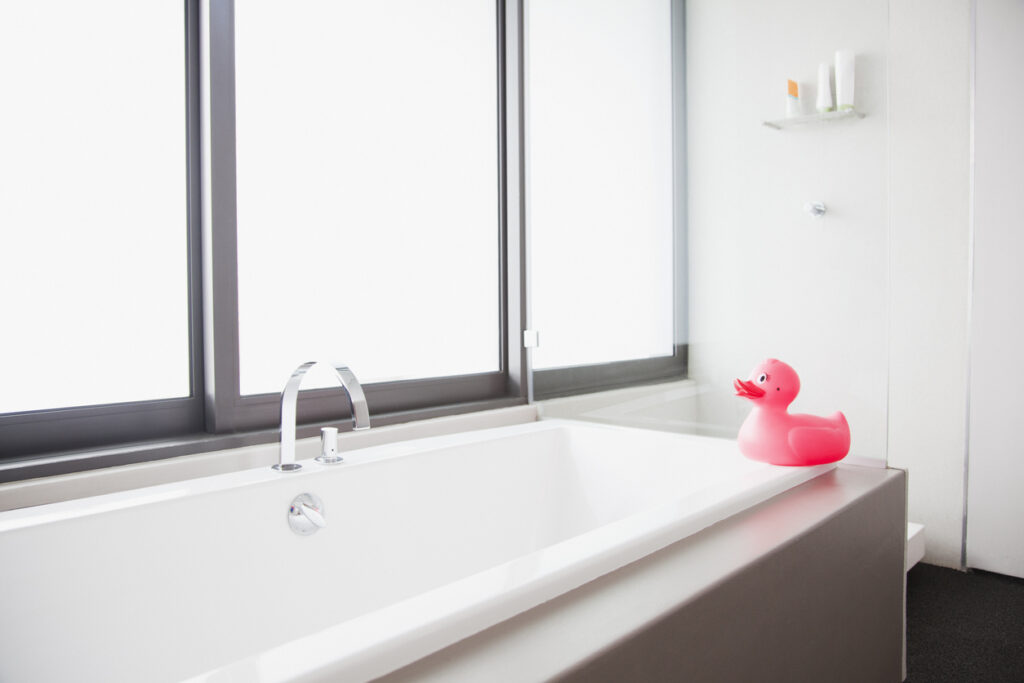
For higher end drop-in models and larger sizes, the prices can shoot up to around $2,000-10,000 for just the bathtub alone. However, many high quality models still exist between $700-1,500 which makes it quite affordable for just about any home. Freestanding is roughly the same, with many models starting at around $700, with a mid range of roughly $1,200-1,500 with some higher end models ending in the tens of thousands.
Garden tubs sit roughly at the top of being the most expensive as the starting price is around $2,000 not including installation considerations such as additional water weight and increased water usage.
With their popularity, drop-in bathtubs are for all ages. They enjoy a large spectrum of utility with many of them converted into shower/bathtub combinations, giving you the convenience of a normal shower with the option of more relaxed bathing down the road.

And with many drop-in bathtubs being flush to the wall, they allow for easier access for children and the elderly as they have more support when compared to a normal freestanding bathtub. With the wall present, hand holds and supports can be installed for more safety measures against falling or slipping.
If you’ve decided to install your drop in bathtub on your own, you will need to follow the steps below:
Compared to most bathtub installations, drop-in bathtubs are the middle ground. The process is simple, but more complicated than installing a freestanding tub. If you are unfamiliar or uncomfortable with the process, it is advised to seek a professional to help you install this type of bathtub.
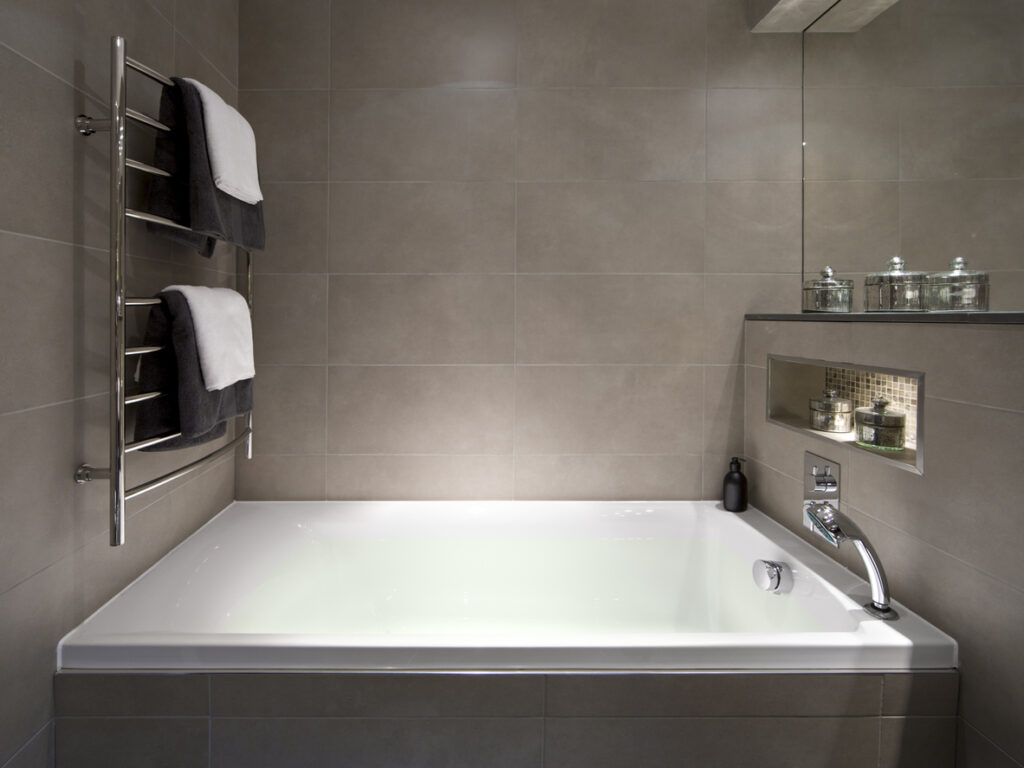
When considering what bathtub to purchase, be sure to consider your needs carefully. Who exactly is using your bathtub and what purpose do you have in mind? Do you need a convenient way to bathe or would you enjoy a more luxurious soak for those special occasions? Do you have a large household or a small one? What type of budget do you have? Address these questions and you will easily find the right bathtub in no time.

Eric is the founder and president of Badeloft USA. He has been the president of Badeloft’s US division for over ten years and oversees all marketing and branding aspects of Badeloftusa.com.
His expertise lies in small business development, sales, and home and bathroom industry trends and information.
Contact us with any business related inquiries.
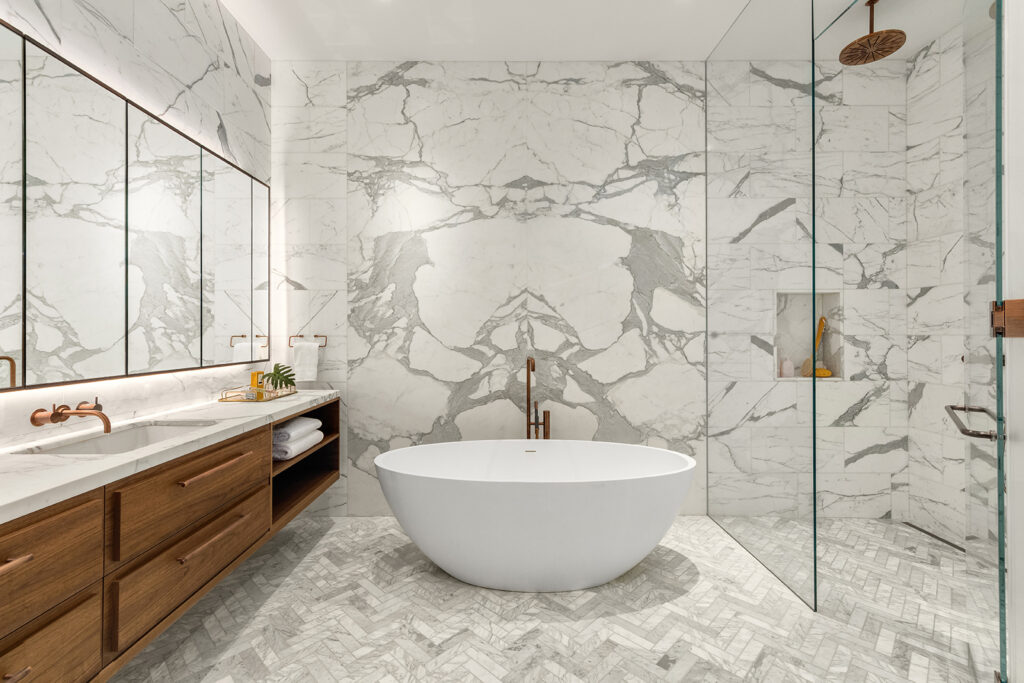
Free material samples and tub templates

If you’re looking to create a spa-like atmosphere in your bathroom, a sunken bathtub might be the luxurious upgrade you

When you’re searching for the right tub, you will find that there are two main types to choose from: alcove

Shopping for a new bathtub can feel overwhelming, especially with so many styles and options to choose from. If you’re
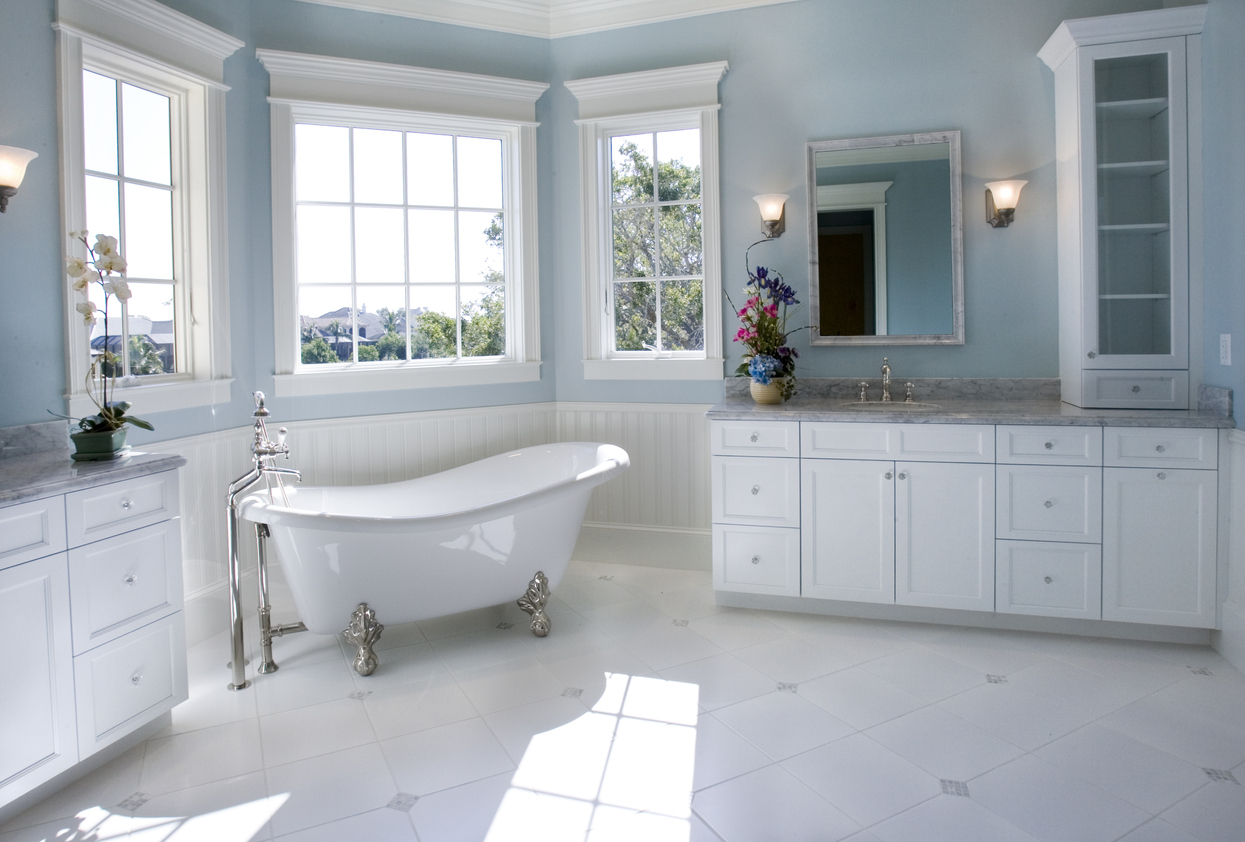
A clawfoot bathtub is a freestanding bathtub that has four pegs or feet directly underneath it. These pegs are finished
Request your free material sample below. By submitting, you agree to receive occasional product updates and offers from Badeloft. Unsubscribe anytime.
"*" indicates required fields
"*" indicates required fields
"*" indicates required fields